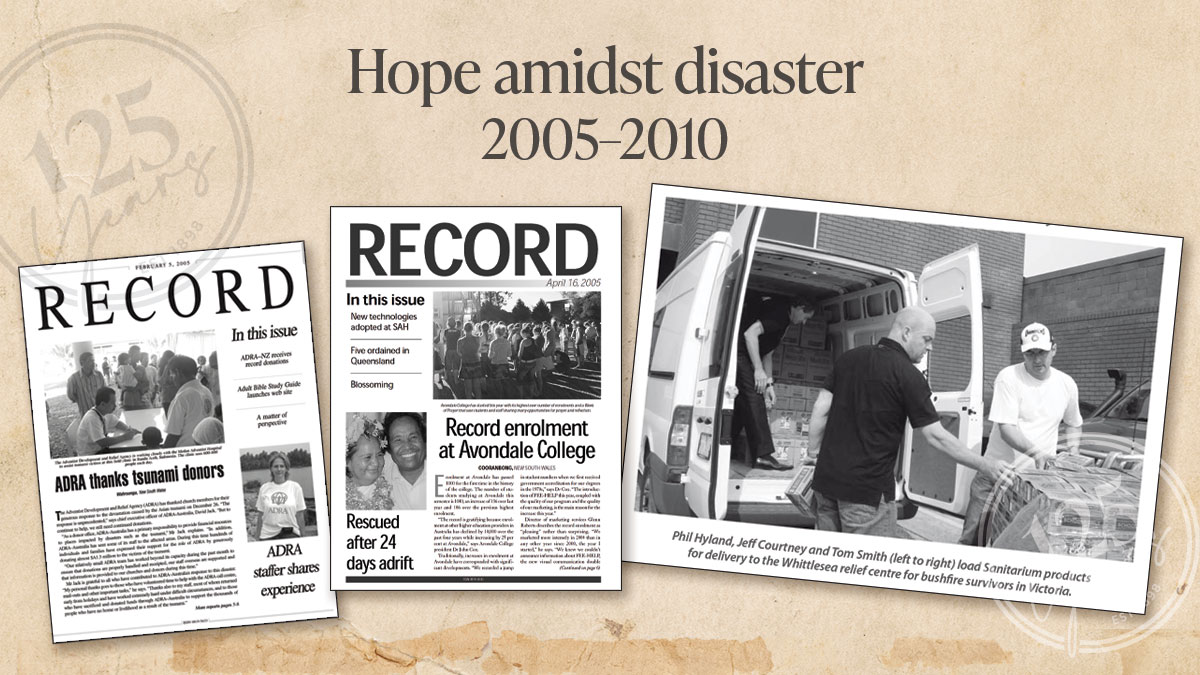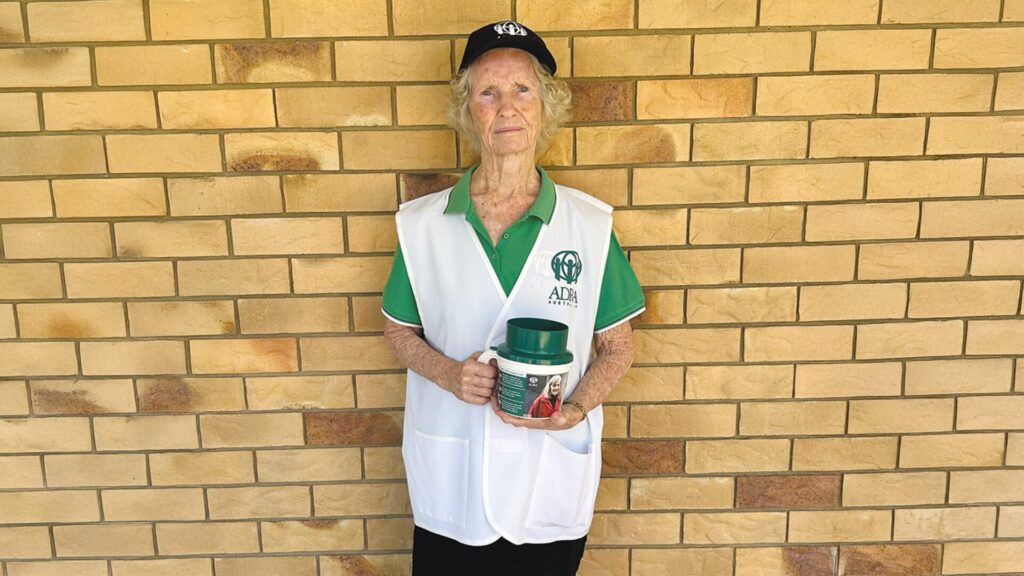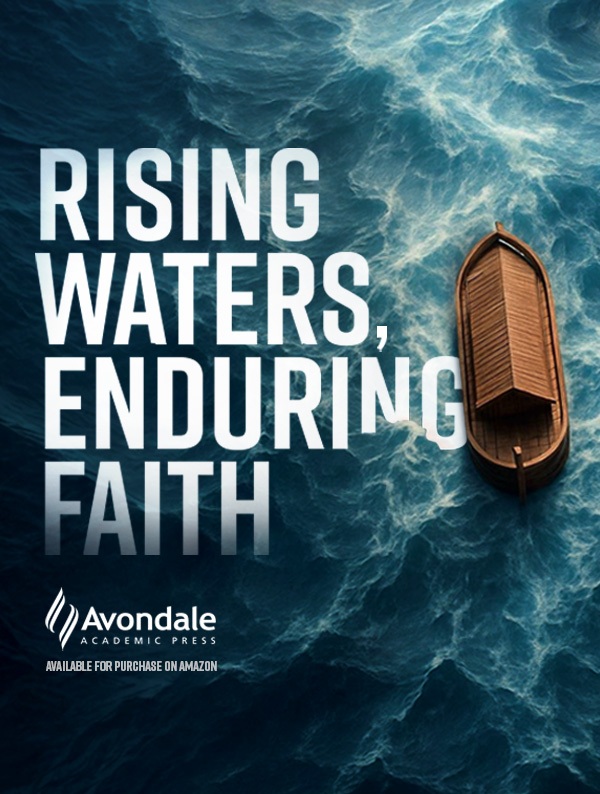Tsunami relief
This time period began on a sad note, following the 9.1 magnitude undersea earthquake on Boxing Day (December 26) 2004, which triggered a series of tsunamis. At the time of printing, it was estimated that at least 165,000 people died in the disaster, with more than 525,000 injured, 1.6 million displaced and more than 1 million homeless (Record, February 5, 2005). The final statistics revealed that around 275,000 people were killed in 14 countries across two continents, with an economic loss valued up to $US9.9 billion in terms of infrastructure and development.1
Throughout January 2005, ADRA was working tirelessly to support the post-tsunami recovery, with a headquarters being set up in Bangkok, Thailand. Approximately $A1.3 million was donated in the three weeks following the disaster to ADRA alone to support the response efforts. “Within days of the disaster, hundreds of volunteers and tonnes of medical supplies, food and water were being deployed across the region” (Record, January 29, 2005).
Not only did ADRA aid in providing immediate relief in the wake of the disaster, but they also wrote proposals to international donors for longer-term funding to help re-establish the region (Record, January 29, 2005). “Responding to disasters such as the tsunami is what ADRA is all about, particularly in the rehabilitation phase. The devastation is so extensive that it will require the full participation of all aid agencies and governments, working together to adequately meet all the needs” (Record, February 5, 2005).
Adrift at sea
Between February 16 and March 12, 2005, the principal of Kauma Adventist High School in the Kiribati Mission—Tekemau Ribabaita—was lost at sea. For 24 days, Tekemau was stuck adrift on the open ocean, surviving on a few bottles of water and a whole lot of prayer, until he was finally rescued (Record, April 16, 2005).
Tekemau had been travelling from Aranuka to Abemama in an aluminium dinghy when disaster struck. He had just dropped off three passengers at Aranuka for a funeral and was making the two-hour journey back to Abemama across open ocean when he saw some birds circling in the air above the water. He recognised this behaviour to mean fish were feeding near the surface, so he changed course and headed in the direction of the birds to try his luck catching something. It was only after he had veered off course that he realised he had a serious problem—water was filling the bottom of the boat.
Without a radio on board, Tekemau turned on the electronic locator beacon (emergency transmitter) and began shovelling water, hoping that someone would respond to his signal for help. Within minutes, the rear of the boat was submerged. Suddenly the boat flipped over backwards! The weight of the water, the engine and Tekemau at the back of the boat shovelling water, all proved too much. All the heavy items from the boat, including the main engine, sank to the ocean floor. Tekemau clung to the underside of the boat, trying to figure out what to do next.
This was not the first time Tekemau had been lost at sea. Just three years earlier, he had spent more than four weeks at sea with two others before being found 300 nautical miles from his home island. Due to this past experience, Tekemau knew he had a chance of survival if the boat could just stay afloat. He turned the boat right side up and assessed his situation. He had his emergency transmitter, fishing gear, a compass, life jackets, two buckets, no food and 10 litres of water. It wasn’t a lot to keep him going.
“Bailing the water out of the boat was my first priority. It took only 10 minutes to empty the boat of most of the water, but it filled again within half-an-hour. For the next week, I slept for half-hour spells before bailing the boat out again—10 minutes bailing and 30 minutes sleeping” (Record, April 16, 2005).
Prayer became the lifeline which Tekemau relied upon. After earnest prayer, God revealed to Tekemau where the leak in the boat was coming from, and he was able to partially plug the hole, giving him one hour’s rest between his bailing duties.
On another instance while bailing water, Tekemau’s main water bottle was polluted with saltwater, leaving him without any drinkable water. He prayed for rain, preparing a rain-catchment set-up for when God answered his prayers. His prayers were answered, and he collected enough water for the remainder of his ordeal.
Tekemau also prayed to God on the fourth Friday he was stuck at sea, asking God to shorten his time adrift. At 9am that next Sabbath morning, Tekemau caught a glimpse of a white ship on the horizon which came to his rescue.
During his entire time at sea, Tekemau only ate four meals, yet when he was rescued, the ship’s crew were amazed that he was still strong and fit after being at sea 24 days. He credited everything to his faith in God and prayer.
Black Saturday bushfires
“A billow of smoke had blacked out our sun on Saturday afternoon, showering us with ash, leaves and bark, and filling our homes, clothes and valley with the biting smell of smoke”
— Nathan Brown (Record, February 28, 2009).
On Sabbath, February 7, 2009, Australia experienced its worst ever bushfire disaster—the Black Saturday bushfires of Victoria. The Black Saturday bushfires claimed the lives of 173 people, with another 414 people injured, 450,000 hectares burned, and 3500 buildings and homes destroyed.2 At the time, these bushfires were described as “the worst disaster in Victoria’s history” (Record, February 28, 2009). The bushfires followed years of drought and weeks of heatwave conditions, with Black Saturday being the hottest day ever recorded in the Melbourne region.
Pastor Chester Stanley released a statement to the media expressing his grief: “I was stunned by the viciousness, speed and scope of the fires, and join all Australians in mourning the terrible loss of life.” He reflected on the experiences of those living in Victoria and their shared horror at the situation: “I am sure there is not a single person in Victoria who does not feel impacted by the current situation and the devastation caused by the bushfires” (Record, February 28, 2009).
Sadly, Adventists and friends of Adventists were among those who lost their lives in the fires. Several other Adventist families lost their homes. Adventist schools and churches around Australia offered prayers and donations for the firefighters, families, communities and individuals affected. The Sanitarium Health Food Company delivered Weet-Bix, So Good and Up&Go to emergency centres operated by the Salvation Army and Red Cross in Whittlesea, Yea and other fire-affected areas (Record, February 28, 2009).
The bushfires had lasting impacts for months and years across much of Victoria. Black Saturday continues to be remembered as a solemn and devastating day.
1. https://knowledge.aidr.org.au/media/3767/tsunami-stats-facts.pdf
2. ‘Black Saturday 2009’, Country Fire Authority (Website, 20 September 2023) < https://www.cfa.vic.gov.au/about-us/history-major-fires/major-fires/black-saturday-2009 >.






